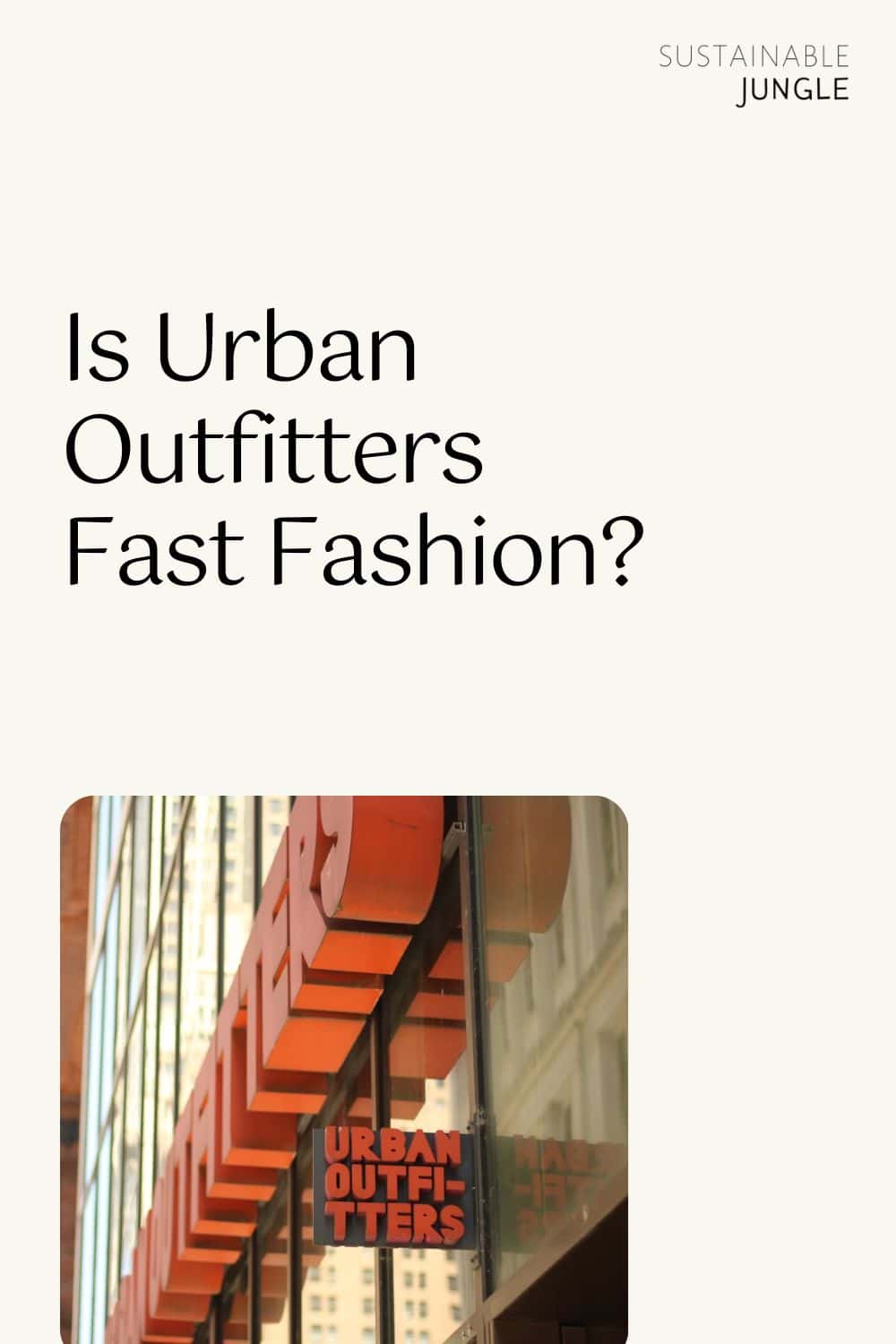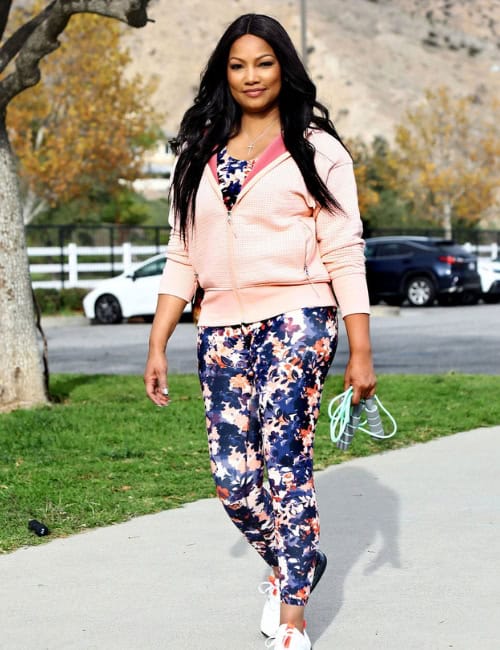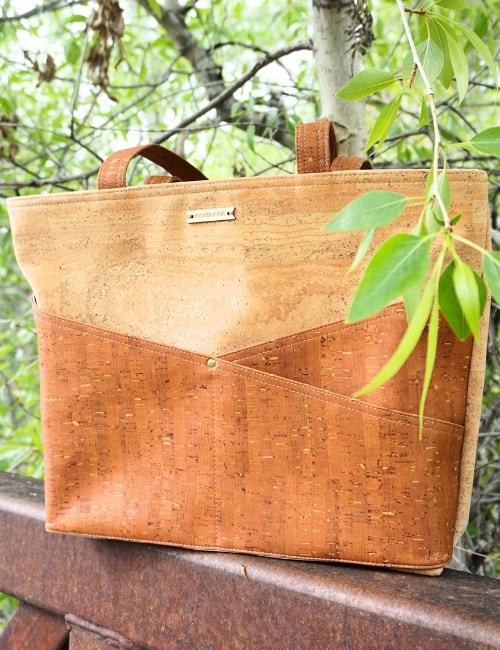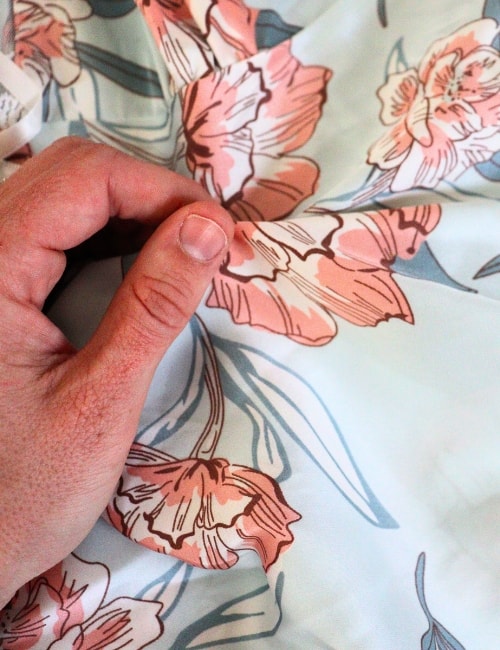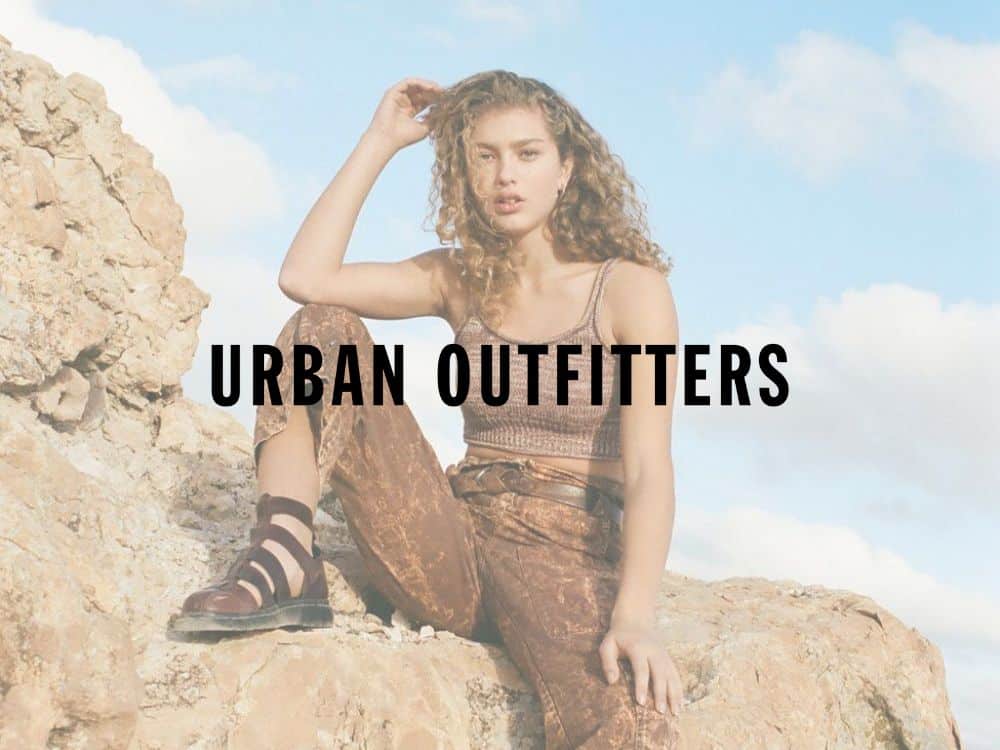
Is Urban Outfitters Fast Fashion?
With its streetwear-grunge meets festival frippery, Urban Outfitters is an iconic purveyor of contemporary American “cool”.
For over thirty years, the store—including its many in-house and sister brands—has set trends, pushed boundaries, and sold endless hipster wares directed to the 16-to-25 crowd.
Controversy is no stranger to Urban Outfitters, which has amassed as many tongue-wagging headlines as it has successful Black Friday sales.
With their seemingly endless range of products and downtown cool, is Urban Outfitters fast fashion?
When a brand’s prices match what sustainable brands who ethically source and pay living wages, one would expect not, but somehow Urban Outfitters manages to subvert our expectations, embodying the worst of both worlds.
Although they’ve made recent strides to improve their practices, the infamous brand notorious for courting controversy is still a serious faux-pas for everything eco-conscious and ethical.
So, exactly why is Urban Outfitters bad?
Let’s roll up our 90s throwback mesh sleeves and find out.
1. Uncovering Why Urban Outfitters Is Problematic

While their clothes (and sky-high price tags) make them appear a “cut” above other fast fashion brands, Urban Outfitters is a fast fashion brand.
Their “New” section currently has over 1000 items listed, and their “New This Week” page features nearly 500 garments—far too much for a planet facing eco-crisis.
Interestingly, they weren’t always a fast fashion brand to avoid.
Dick Hayne opened the first ever store in Philadelphia in the 1970s, calling it Free People (now the name of their iconic sister brand), complete with free bins for customers to trade clothes, house plants, records, secondhand, and some hippy clothes for sale.
With its mostly found objects and furniture, the shop embodied thrifty circularity and a kind of self-expression and rebellion cornerstone to the era.
Today, the corporate co-opted hipster brand operates with many in-house labels under the giant retail conglomerate URBN, who also own Free People, Anthropologie, Nuuly, and others.
Urban Outfitters has over 600 stores operating worldwide and generates around $5 billion in profit per year.
While UO began as a local Philly counterculture icon, today the brand dons the identity of ugly fast fashion (no) thanks to its mass trend-driven offerings, many controversies, and unethical approaches to business, in spite of their UO In Progress and careful head office messaging about caring for people and the planet.
Given the “adaptive reuse” strategy of many of their airy loft-like stores, their circular-seeming Urban Renewal clothing, and the premium price tags attached to their wares, the brand appears deceitfully sustainable.
Yet Good on You gives UO a “Not Good Enough” sustainability score of 2 out of 5, and the Fashion Transparency Index provides a pathetic 11% Urban Outfitters sustainability rating.
In other words, the room for improvement is bigger than their latest overpriced parachute pants.
2. Urban Outfitters Controversies

UO churns out controversy as swiftly as they churn out resource-intensive clothes.
From Rana Plaza to #PayUp to outrageously offensive merch, racial profiling busts, design theft, and scores of damning headlines, Urban Outfitters has a lot to answer for.
Trickling down from the top brass, there’s a toxic culture of disrespect, exploitation, theft, and a downright disdain for even their own customer base
“The Urban [Outfitters] customer, we always talk about, is the upscale homeless person, who has a slight degree of angst and is probably in the life stage of 18 to 26,” said founder and now billionaire Dick on a call with analysts. “The Urban customer is really dressing to attract a mate.”
His Executive Director Suo Otto then compared her own studies of the UO shopper to anthropologist Jane Goodall researching chimpanzees in the wild.
Street urchins and monkeys—this is how UO views the people it claims to care so much for.
Rana Plaza
The world collectively became aware of the real cost (and dangers) of fast fashion in 2013, when history’s deadliest garment factory disaster occurred.
The Rana Plaza collapse tragically killed over 1,100 unprotected and underpaid Bangladeshi garment workers, leaving an additional 2,500 seriously injured and/or permanently disabled.
And where are Urban Outfitters clothes made?
While the brand doesn’t publish that information, they were sewn in Rana Plaza at the time.
In the wake of the disaster, many large retailers banded together to address unsafe working conditions in factories overseas, but Urban Outfitters outright refused to join the movement.
Stolen Wages
What about Urban Outfitters’ pay rate?
When COVID-19 stopped sales globally, numerous fashion brands canceled orders with suppliers, leaving them and their garment workers in a catastrophic financial lurch with unpaid wages for already sewn and ready-to-ship apparel.
To date, parent company URBN refuses to #PayUp, with the hashtag becoming a popular online campaign alongside an online tracker by the Workers Rights Consortium to follow who has not paid up.
The Guardian reports unpaid wages are a whopping $16 billion, of which at least $220 million is URBN’s duty to pay.
USA Sweatshop Labor
UO has had recent domestic labor controversies, too.
Just before the California Supply Chains Transparency Act came into effect, they were caught in a domestic garment workers scandal by employing illegal workers in LA sweatshops, falsifying their time records, and withholding wages.
The US Department of Labor investigated the LA garment industry in 2016, finding labor violations occurred in 85% of the 77 factories randomly inspected.
Over 80% of garment workers in Los Angeles were discovered to have experienced wage theft and these all had “sweatshop” conditions.
URBN never made a public response about the fiasco.
Further indicative of a toxic work environment at Urban Outfitters, they recently sent a company-wide email asking employees to work for free over a weekend.
Child Labor
Does Urban Outfitters use child labor?
Although URBN claims a commitment to zero child or slave labor, the lack of evidence paired with petitions and reports that highlight concerns about sweatshops and factory conditions means that child labor is wrapped up in UO’s very sheathed supply chains.
Human Rights Watch has even issued a report urging the brand to go transparent for this very reason.
One popular petition from 2011 urged UO to stop using Uyghur child labor for cotton.
But since the brand still ISN’T transparent and lacks any reliable certifications for its supply chains, we can only assume the worst.
Offensive Merch
It’s a fast fashion fact that many of these brands let offensive merch somehow slide past their quality control.
Urban Outfitters takes it to the next level. We’re talking:
- A $50 t-shirt saying “Eat Less”:
- A $60 t-shirt with the word “depression” all over it
- A tapestry that looks like Auschwitz uniforms for gay Jews
- A racist Monopoly game called “Ghettopoly:
- Shampoo for “suicidal” hair
- Endlessly glorified drug/ addiction/ booze paraphernalia directed at kids
- S suggestive photo of an underage girl on a shirt who then successfully sued
- A “victimized” Palestinian shirt with AK-47s
- An expensive Native Navajo line (including a very-tacky whisky flask) without permission that they were sued for
- Most publicized of all, an outrageously tasteless Kent State University sweatshirt with distinctive blood splatters (queue the Crosby, Stills, Nash & Young protest song “four dead in Ohio…”)
This low-brow, tasteless non-humor isn’t accidental either, but part of their marketing strategy.
As one headline stated: “Urban Outfitters Is Pissing Everybody Off, and That’s Just How They Like It”.
Or “Urban Outfitters’ Real Scandal: Its Disdain For Its Customers” and “How Urban Outfitters Trades on Moral Outrage”.
A pattern emerges of subsequent half-hearted apologies that border on downright antipathy towards Urban Outfitters’ own shoppers—and humankind.
Racial Profiling
Is Urban Outfitters racist?
Urban Outfitters admitted that a store policy led to racial profiling, where they gave Black shoppers the nicknames “Nick” and “Nicole”.
At the height of the BLM movement, A-list celebrity Emmy Rossum even publicly apologized for wearing their “stupid Free People [sister brand] bralettes” on the hit TV show Shameless.
Design Theft
Besides their very-tacky Navajo nation theft of a sacred and indigenous pattern, the brand is also notorious for stealing designs from independent creators, like Canadian artist Lee Meszaros’ whimsical and one-of-a-kind designs.
More recently, they ripped off Detroit artist Johanna Ulevich’s “YARNMAGEDDON” knit hats.
Toxic Materials
As Fast Company first reported, dangerous lead and cadmium levels in much of UO’s overpriced jewelry led the Center for Environmental Health to issue a warning.
Their jewelry featured as much as 64% lead and 52% cadmium, “stunningly high” levels that are linked to kidney damage, cancer, and other health issues.
Some of this jewelry was even marketed as repurposed and reinvented “sustainably sourced vintage pieces…”
Damaging Unsold Products
A brand can tout sustainability in their marketing, but when they’re demanding employees to ‘damage out’ unsold merchandise to reduce inventory and secure profits, well, we have no words.
According to reputed fashion advocates Remake/World, URBN whistleblowers have reported for five-plus years already about the brand’s damage out practices, while they continue to hide behind a PR rhetoric of sustainability.
While the brand touts a partnership with FabScrap and even introduced the Nuuly line to promote circularity, these initiatives are performative and hollow if the brand damages out its merch instead of donating or recycling its textiles.
3. Urban Outfitters Ethics Are Unclear

Now let’s undress the ethical issues surrounding Urban Outfitters, as if our knickers weren’t already in enough of a twist over their controversies.
How ethical is Urban Outfitters?
Spoiler alert: those sky-high product prices aren’t paying for ethical practices, but lining the pockets of their hoarding, insulting executive team instead…
Urban Outfitters Labor Practices
Via parent company URBN, their first impact report was published in 2022 and then in 2023, with a shortened “Impact Scorecard” and no full report.
While URBN’s report commits to improving supply chain transparency, the statement in and of itself provides no transparent or traceable roadmap toward this target or how they’ll measure it.
Then there is their brand new clothing line, KOTO, which they tout as sustainably sourced and responsibly made, but without any reputed manufacturing certifications to back up these claims.
As part of a multi billion-dollar fashion behemoth, they sure have the resources to become Fair Trade or a Certified B Corp, but choose not to.
Due to the California Transparency in Supply Chains Act, UO now provides a statement, where the bare minimum is laid out to stop child labor, human trafficking, or slavery in their production pipelines.
They say audits both announced and unannounced occur, but fail to pay a reputed certification body to ensure fair supply chains.
According to their vague Modern Slavery Act Report 2023, Urban Outfitters takes steps to ensure better traceability of supply chains—and that’s just about the end of that.
Lack Of Supply Chain Transparency
The Urban Outfitters website doesn’t publish where their clothing is made, nor does parent company URBN’s Impact Report, despite claims of “improving supply chain transparency” and conducting third party annual assessment of all factories.
They do offer a promise of no Uyghur forced labor cotton being used and state all vendors are prohibited from using conflict minerals from the Congo.
But without any published lists of suppliers, factories and locations, or published reports of factory audit findings, there’s no way to validate even these base-level claims.
Given this company’s long list of past (AND recent) labor scandals, they give us no reason to believe they’re made a turnaround.
Animal Welfare
Is Urban Outfitters ethical when it comes to animals at least?
Aside from URBN going Angora-free in 2016, the brand has no animal welfare policy and still uses all forms of animal skins and products without any traceable or transparent information to ensure the workers and animals involved were treated humanely.
In fact, an undercover PETA investigation revealed that the alpaca farm supplying URBN’s alpaca wool hit, kicked, tied down, and mutilated alpacas for their wool.
Urban Outfitters (and sister brand Free People) generated further controversy recently with a “free kitten” giveaway with purchase, which further raised animal welfare alarm bells.
Netizens and shoppers alike were genuinely concerned for the wellbeing of these pets being spontaneously adopted alongside a fast fashion purchase.
4. Urban Outfitters Sustainability Is Greenwashed

UO’s ethics sure aren’t a match for their inflated prices, but is Urban Outfitters sustainable?
Fortunately the brand made some recent progress when it comes to mitigating its eco-impact, although huge room for improvement remains.
For starters, part of the vague Urban Outfitters mission statement on their “progress” page essentially “skirts” the whole issue stating:
“More to come and so much to do, but… here are some of the ways we’re making mindful, eco-conscious decisions as a brand.”
After which it provides some greenwashing catch-words about their packaging, polybag recycling, community donations, renewable energy use, virtual sampling, and adaptive reuse in offices and stores.
Environmental Impact & Manufacturing
While the controversial retailer claims to use eco-friendly materials for its products, there’s no sustainability certifications to back this up, nor is there proof that UO takes action to minimize textile waste (aside from their virtual sampling) or eliminate hazardous chemicals.
To mitigate environmental impact, the brand is expanding their renewable energy use. Their main distribution center has one of the largest solar arrays in America, with a 22-acre roof and a net-effect of 22 million kilowatts per hour of saved energy, which equals 965 tons of CO2 or 24,212 trees per year.
Their head office uses a Bloom Box Energy system that converts chemical energy into electricity with a lifetime energy generation of 26,666 MWh.
We hope this focus on renewable energy soon extends to their entire supply chain. Likewise, we’re expecting the brand to tackle deforestation, reduce hazardous chemicals, minimize synthetic production from petroleum, or lower its water usage in its supply chain if it truly cares about sustainability.
Materials
Urban Outfitters carries a vast array of brands for sale, but here we’ll focus on their inhouse labels.
The brand admits that currently just 10% of their direct-sourced raw materials are responsibly sourced. (No evidence provided to back this up, though.)
Their Urban Renewal clothing line is one of the original brands to upcycle secondhand clothing, supposedly diverting over 8 million garments from the landfill to date.
The new KOTO line claims to use recycled cotton, recycled polyester, and responsibly sourced US cotton, which can be traced back to the domestic family farms where it is harvested (though, again, without certifications or transparency we can’t confirm).
But what’s the point other than greenwashing when they continue to damage out its unsold merchandise?
Then there’s the BDG Urban Outfitters label that exclusively sells denim, which is one of the most intensive fabrics to make in terms of water, energy, and chemical use.
The brand claims that starting in 2023, all BDG Urban Outfitters jeans are produced more sustainably with some recycled cotton (how much?) and low-impact wash techniques to save water and energy.
BDG is now also a Better Cotton Initiative member, but as we’ve covered, the BCI Cotton program is filled with greenwashing of its own.
As for the rest of their inhouse labels and clothing, the vast majority still uses unregulated cotton, microplastic shedding plastic synthetic fabrics, and chemically-intensive semi-synthetics like viscose and rayon.
The brand did partner with FabScrap to turn 20,000+ lbs of textiles into new clothes, but considering 92 million tons of clothing are scrapped annually, it hardly seems like enough given the volume of clothing they produce (and intentionally waste).
Carbon Footprint
While Urban Outfitters fortunately uses some renewable energy in its direct operations to lessen its climate impact, no meaningful action is being taken to mitigate or eliminate carbon, hazardous chemicals, water pollution, or other GHG emissions.
There is also no evidence that UO implements water reduction initiatives other than its BDG line of jeans.
In their parent company URBN’s 2021-2022 impact report, under “Increase Cleaner Energy” they promise to set science-based targets by 2025.
Let’s review that statement again: they’re not even attempting to REACH targets by 2025… nope, they’re simply setting targets by then.
Sure enough, in the following 2022-2023 Urban Outfitters sustainability report, the only update on this is that they have “begun calculation of global scope 1 and 2 emissions under our operational control”.
Fortunately, Urban Outfitters EU is pulling up their socks when it comes to their carbon footprint.
The same report says that by 2030, UO EU commits to carbon footprint reduction by 50% and water footprint by 30%. UO EU also plans to increase sustainable material mix to 40% in 2023 and to 100% by the year 2030.
We hope UO’s much larger North American operations soon follow suit.
Did you know we Have a Newsletter?
We cover the latest in sustainable living, fashion, zero waste, beauty, travel, finance and more…
Final Thoughts On Is Urban Outfitters A Fast Fashion Brand?
Fast fashion is a triangular hoarding economy, and it trickles down mere pennies of its billionaire profits to those who work the hardest, on the factory floors.
But we shoppers have the power to reshape this story through dollar voting.
And honestly, who wants to support a brand who looks at clientele like monkeys or street urchins, while also charging a pretty penny for their wares?
Imagine how little regard they have for their supply chain if those providing their record profits—their consumer base—are so deeply detested.
So the next time you need some fresh hipster grunge wear, we encourage you to buy sustainably, since most sustainable streetwear brands fall in the same price range.
Or for the best value, go thrifting!
Got an edgy colleague who still falls for UO’s snotty sales tactics?
Please, send them this article to support a more just and sustainable fashion industry for all.
Pin these:

